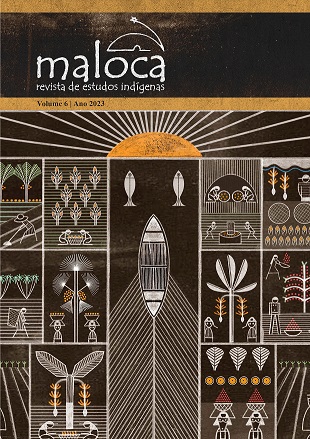Resumo
Na última década, a Bolívia e a região passaram por profundas mudanças em termos de dinâmica de mobilidade populacional, onde a “migração em trânsito” é o elemento mais destacado devido à presença crescente de migrantes extra-regionais (haitianos) e regionais (especialmente venezuelanos), que somada à tradicional dinâmica migratória nacional produziu novas espacialidades e práticas em torno da mobilidade. Ao mesmo tempo, a intensificação dos controles migratórios e fronteiriços tem uma das suas principais expressões no aumento do uso de medidas punitivas ou repressivas como a militarização, a detenção, a expulsão e a rejeição na fronteira. Estas novas migrações laborais perturbaram a ordem fronteiriça regional e deram origem a diferentes práticas de controle. Nestes novos contextos, a fronteira da Bolívia (Pisiga) e do Chile (Colchane) desempenha um papel fundamental.
Referências
Biondini, V.; Domenech, E.; Hinojosa, A.; Peñaranda, R. 2023. Movimientos de migración y políticas de movilidad en el espacio sudamericano: la producción de Bolivia como ‘zona precaria de tránsito’. In: Navarro Alvarado, G. A. Migrar en el siglo XXI: conflictos, políticas y derechos. Buenos Aires: Clacso, 185-247.
D’Andrea, A., Ciolfi, L., y Gray, B. 2011. Methodological Challenges and Innovations in Mobilities Research. Mobilities, 6(2): 149–160.
De la Torre, L. 2014. Más notas sobre el retorno cíclico boliviano. Control y libertad en los proyectos de movilidad entre España y Bolivia. En S. Solé, S. Parella, y A. Petroff (Eds.). Las migraciones bolivianas en la encrucijada interdisciplinar: evolución, cambios y tendencia. Bellaterra: Universitat Autònoma de Barcelona, 127-153.
De Marchi, B. y Alvites, A. 2022. El muro invertido: las zanjas en el límite fronterizo de Chile con Bolivia. Geopolítica(s). Revista de Estudios sobre Espacio y Poder, 13 (2): 355–384.
DIGEMIG Dirección General de Migración Resolución N° 148 del 2020.
Guizardi, M; Garcés, A. 2013. Circuitos migrantes. Itinerarios y formación de redes migratorias entre Perú, Bolivia, Chile y Argentina en el norte grande chileno. Papeles de Población 19 (78): 65-110.
Guizardi, M.; Garcés, A. 2012. Mujeres peruanas en las regiones del norte de Chile: Apuntes preliminares para la investigación. Estudios Atacameños 44: 5-34.
Hess, S. 2010. The Invention of “Transit Migration”. Theoretical and Methodological Considerations on Illegal Migration in Europe’s Southeastern Border Region. Ethnologia Balkanica 14: 129-146.
Hess, S. 2012. De-naturalising transit migration. Theory and methods of an ethnographic regime analysis. Population, Space and Place, 18(4), 428–440.
Hinojosa, A. 2009. Buscando la vida. Familias bolivianas transnacionales en España. CLACSO-PIEB.
Maggi, M. F. 2021. ‘Idas y venidas’ entre Bolivia y Argentina. Retornos cíclicos en las movilidades bolivianas contemporáneas. Anuario del Instituto de Historia Argentina, 21 (2): 1-15.
Magliano, María José. 2008. Migración de mujeres bolivianas hacia Argentina: cambios y continuidades en las relaciones de género. Amérique Latine Histoire et Mémoire. Les Cahiers ALHIM 14. http://alhim.revues.org/index2102.html.
Marcus, G. E. 2001. Etnografía en/del sistema mundo. El surgimiento de la etnografía multilocal. Alteridades 11 (22): 111–127.
Lin, W., Lindquist, J., Xiang, B. y Yeoh, B. S. 2017. Migration infrastructures and the production of migrant mobilities. Mobilities, 12 (2): 167-174.
Mardones, P. 2021. Conversatorio virtual organizado por la Red Bolivia Mundo. La Paz.
Martínez Pizarro, Jorge. 2003. El mapa migratorio de América Latina y el Caribe, las mujeres y el género. Santiago: CEPAL-CELADE-UNFPA.
Gonzáles, S. Leiva, S. 2016. El norte grande durante el ciclo del salitre: la política salitrera y la política exterior en la formación de un espacio transfronterizo (Bolivia y Chile, 1880 – 1929). Estudios Atacameños 52: 11-29.
Tapia, M. 2012. Frontera y migración en el norte de a partir del análisis de los censos población: Siglos XIX- XXI. Revista de Geografía Norte Grande 53: 177–198.
Tapia, M. 2015. Frontera, movilidad y circulación reciente de peruanos y bolivianos en el norte de Chile. Estudios Atacameños 50: 195–213.
Tarrius, A. 2007. La mundialización por abajo. El capitalismo nómada en el arco mediterráneo. Barcelona: Hacer Editorial.
Icarte, L.; Torres, N; Ramos, R. 2018. La Zona Franca de Iquique y su impacto en el trabajo informal de mujeres migrantes fronterizas. Polis 17 (51): 63–87.
Leiva, S.; Mansilla, M. Á.; Comelin, A. 2017. Condiciones laborales de migrantes bolivianas que realizan trabajo de cuidado en Iquique. Si Somos Americanos 17(1): 11–37.
Leiva, S.; Orellana, C. 2016. Migración circular y trabajo de cuidado: fragmentación de trayectorias laborales de migrantes bolivianas en Tarapacá. Psicoperspectivas 15 (3): 56–66.
Tazzioli, M. 2020. Governing migrant mobility through mobility: Containment and dispersal at the internal frontiers of Europe. Environment and Planning C: politics and space, 38 (1): 3–19.
Xiang, B.; Lindquist, J. 2014. Migration Infrastructure. International Migration Review, 48(1): 122–148.
Watts, L. y Urry, J. 2008. Moving Methods, Travelling Times. Environment and Planning D: society and space 26 (5): 860–874.

Este trabalho está licenciado sob uma licença Creative Commons Attribution-NonCommercial-ShareAlike 4.0 International License.
Copyright (c) 2024 Alfonso Hinojosa Gordonava



